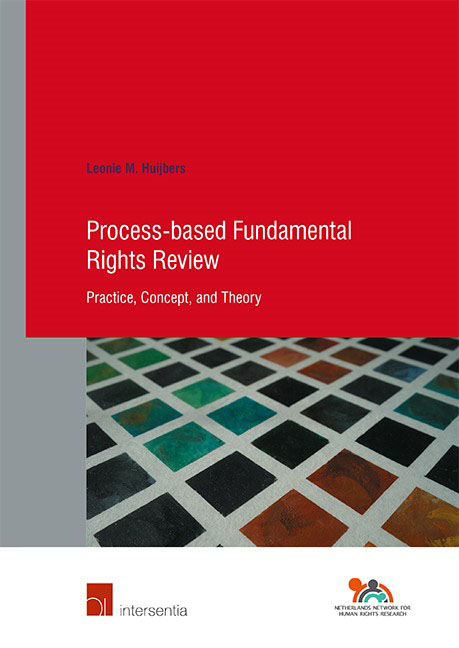Book contents
- Frontmatter
- Acknowledgments
- Contents
- List of Abbreviations
- INTRODUCTION
- PART I THE PRACTICE OF PROCESS-BASED FUNDAMENTAL RIGHTS REVIEW
- PART II THE CONCEPT OF PROCESS-BASED FUNDAMENTAL RIGHTS REVIEW
- PART III THE THEORY ON PROCESS-BASED FUNDAMENTAL RIGHTS REVIEW
- CONCLUSION
- Addendum: Questions for ECtHR Judges
- Summary
- Samenvatting
- Bibliography
- Official Documents
- Case-Law (by Jurisdiction)
- Case-Law (by Name)
- Curriculum vitae
- Human Rights Research Series
- Index
Chapter 1 - Introduction
Published online by Cambridge University Press: 11 November 2021
- Frontmatter
- Acknowledgments
- Contents
- List of Abbreviations
- INTRODUCTION
- PART I THE PRACTICE OF PROCESS-BASED FUNDAMENTAL RIGHTS REVIEW
- PART II THE CONCEPT OF PROCESS-BASED FUNDAMENTAL RIGHTS REVIEW
- PART III THE THEORY ON PROCESS-BASED FUNDAMENTAL RIGHTS REVIEW
- CONCLUSION
- Addendum: Questions for ECtHR Judges
- Summary
- Samenvatting
- Bibliography
- Official Documents
- Case-Law (by Jurisdiction)
- Case-Law (by Name)
- Curriculum vitae
- Human Rights Research Series
- Index
Summary
THE RISE AND CONTROVERSY OF PROCESS-BASED FUNDAMENTAL RIGHTS REVIEW
For some time now, there has been an ongoing debate over the use of process-based fundamental rights review by the European Court of Human Rights. Scholars have noted a so-called ‘ procedural turn’ in the case-law of the ECtHR. This refers to the ECtHR's increasing focus on the decision-making processes of national authorities to determine whether there has been a violation of one of the substantive rights of the European Convention on Human Rights. More and more it relies on the quality, diligence, and fairness of national legislative, administrative, and judicial processes, instead of, or in addition to, the substantive reasonableness of the content of the measures taken. A procedural approach has been taken particularly in cases concerning the right to respect for private and family life (Article 8 ECHR), the right to freedom of religion and belief (Article 9 ECHR), the right to freedom of expression (Article 10 ECHR), the right to freedom of assembly and association (Article 11 ECHR), and the right to respect for one's property (Article 1 Protocol 1 ECHR). For instance, the ECtHR has in some cases praised States for their extensive and serious parliamentary deliberations during the legislative process. It has also examined decision-making procedures of national executive authorities to see whether they carried out and relied on impact assessments, and whether they allowed individuals to participate in decisions affecting them. Furthermore, the ECtHR has paid attention to the quality of national judicial proceedings, in particular to make sure that national courts carried out a balancing exercise in light of the Convention rights and the standards developed by the ECtHR.
The use of process-based review is not completely new to the Convention system nor to the ECtHR's reasoning. Indeed, perhaps self-evidently, the ECtHR has routinely applied procedural reasoning in relation to procedural rights, such as the right to a fair trial (Article 6 ECHR) and the right to an effective remedy (Article 13 ECHR). Moreover, as early as the 1990s, the ECtHR attached ‘ procedural limbs’ to the right to life (Article 2 ECHR) and the prohibition of torture, inhuman and degrading treatment (Article 3 ECHR). In particular, it requires national authorities to investigate and prosecute when claims of violations of these rights have been raised. The current ‘ procedural trend’ may thus be seen as a continuation of the ECtHR's procedural approach.
- Type
- Chapter
- Information
- Process-based Fundamental Rights ReviewPractice, Concept, and Theory, pp. 3 - 18Publisher: IntersentiaPrint publication year: 2021

